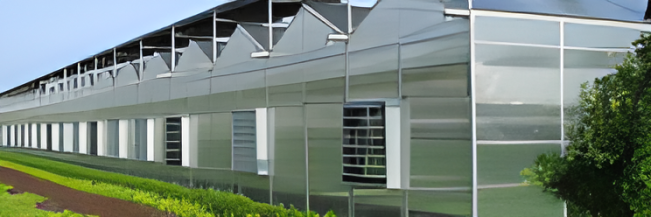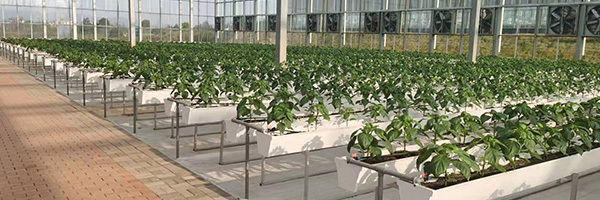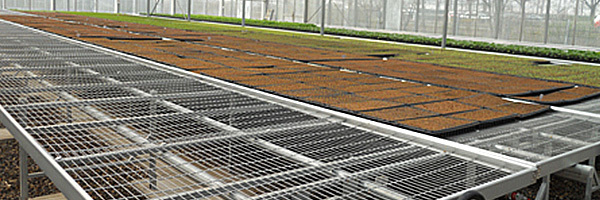-
-
Company Profile
-

Greenhouse Structures

-
Polycarbonate sheet greenhouse
-
Glass greenhouses
-
Multi-Span film greenhouse
-
Tunnel greenhouse
-
Sightseeing greenhouse
-
Double-film frame solar greenhouses
-
Glass and polycarbonate sheet greenhouses
-
Glass greenhouses structures suitable for planting
-
Glass Greenhouse for Scientific Research
View More -
-

-

Exploring the Versatility of Glass Greenhouses in Different Climates
Release time:
2025-11-03
Exploring the Versatility of Glass Greenhouses in Different Climates Table of Contents 1. Introduction to Glass Greenhouses 2. Advantages of Using Glass Greenhouses 3. Climate Adaptability of Glass Greenhouses 3.1 Glass Greenhouses in Tropical Climates 3.2 Glass Greenhouses in Temperate Climates 3.3 Glass Greenhouses in Cold Climates

Exploring the Versatility of Glass Greenhouses in Different Climates
Table of Contents
- 1. Introduction to Glass Greenhouses
- 2. Advantages of Using Glass Greenhouses
- 3. Climate Adaptability of Glass Greenhouses
- 3.1 Glass Greenhouses in Tropical Climates
- 3.2 Glass Greenhouses in Temperate Climates
- 3.3 Glass Greenhouses in Cold Climates
- 4. Key Design Considerations for Glass Greenhouses
- 5. Sustainable Practices in Glass Greenhouse Operations
- 6. Cost Analysis of Glass Greenhouses
- 7. Success Stories: Glass Greenhouses Across Different Climates
- 8. Frequently Asked Questions (FAQs)
- 9. Conclusion
1. Introduction to Glass Greenhouses
Glass greenhouses have revolutionized the way we approach gardening and agriculture. These structures not only provide a controlled environment ideal for plant growth but also allow for the cultivation of a wide variety of crops regardless of external weather conditions. In recent years, there has been a surge in interest surrounding glass greenhouses due to their versatility and aesthetic appeal.
In this article, we will explore the various aspects that make glass greenhouses a preferred choice for gardeners and farmers alike, examining their functionality across different climates, design considerations, and sustainability practices.
2. Advantages of Using Glass Greenhouses
One of the most significant advantages of glass greenhouses is their ability to harness natural sunlight, creating an optimal environment for plants. The transparency of glass allows for maximum light penetration, which is crucial for photosynthesis. But the benefits don’t stop there; they include:
2.1 Enhanced Temperature Control
Glass greenhouses maintain a stable temperature, protecting plants from the harshness of climate fluctuations. By utilizing heating and cooling systems, these structures can create an ideal microclimate.
2.2 Pest and Disease Management
The enclosed environment of a glass greenhouse helps minimize the risk of pests and diseases, reducing the need for chemical interventions. This promotes healthier plant growth and yields.
2.3 Year-Round Cultivation
Glass greenhouses allow for year-round planting and harvesting. This capability is particularly beneficial for regions with harsh winters or extremely hot summers, where outdoor gardening is not feasible.
2.4 Aesthetic Appeal
The elegance of a glass greenhouse enhances the beauty of any garden. Their modern design can complement a wide range of landscapes, making them an attractive addition for homeowners.
3. Climate Adaptability of Glass Greenhouses
Glass greenhouses excel in their ability to adapt to diverse climatic conditions. This adaptability enables gardeners and farmers to optimize their practices based on local environmental factors.
3.1 Glass Greenhouses in Tropical Climates
In tropical regions, where humidity levels are high, glass greenhouses can be designed with ventilation systems to promote airflow. This helps prevent mold growth and keeps temperatures manageable. Additionally, using shade cloth can mitigate the intense sunlight, protecting delicate plants from sunburn.
3.2 Glass Greenhouses in Temperate Climates
Temperate climates benefit from glass greenhouses because these structures can maximize solar energy in cooler months while providing ventilation during warmer periods. Automatic window systems can be integrated to optimize airflow, making it easier to manage temperature fluctuations.
3.3 Glass Greenhouses in Cold Climates
In colder regions, glass greenhouses can extend the growing season significantly. Insulated glass and strategic placement of thermal mass materials, such as water barrels or stone, can store heat during the day and release it at night, ensuring a stable environment for plants.
4. Key Design Considerations for Glass Greenhouses
When designing a glass greenhouse, several factors must be considered to enhance functionality and efficiency.
4.1 Orientation
The orientation of a greenhouse is critical to maximizing sunlight exposure throughout the day. Ideally, glass greenhouses should face south to capture the most light.
4.2 Size and Structure
The size of the greenhouse should correlate with intended use. Larger greenhouses can accommodate more plants but may require more significant investments in heating and cooling systems.
4.3 Ventilation Systems
Incorporating effective ventilation systems is essential to manage humidity and temperature. Options include exhaust fans, roof vents, and side vents that can be automated for convenience.
4.4 Material Quality
The type of glass used also affects durability and insulation. Double-glazed glass is often preferred for its energy efficiency, while tempered glass offers added strength.
5. Sustainable Practices in Glass Greenhouse Operations
Sustainability is increasingly becoming a priority in agricultural practices. Glass greenhouses can contribute to sustainable farming in several ways.
5.1 Water Conservation
Implementing rainwater harvesting systems can significantly reduce water consumption. Moreover, drip irrigation can optimize water use by delivering moisture directly to the plant roots.
5.2 Renewable Energy Sources
The installation of solar panels on the greenhouse roof can provide renewable energy for heating and lighting, reducing reliance on fossil fuels.
5.3 Organic Growing Techniques
Using organic fertilizers and pest control methods can enhance the sustainability of glass greenhouse operations, promoting healthy ecosystems.
6. Cost Analysis of Glass Greenhouses
Understanding the financial aspects of investing in a glass greenhouse is crucial for both small-scale gardeners and large agricultural operations.
6.1 Initial Investment
The initial costs of glass greenhouses can be higher than those of their polycarbonate or plastic counterparts. However, the longevity and efficiency of glass often justify the expense in the long run.
6.2 Operational Costs
Operational costs can vary based on climate, design, and energy requirements. Implementing energy-efficient practices can help reduce these ongoing expenses.
6.3 Return on Investment (ROI)
The ROI of a glass greenhouse can be substantial. By enabling year-round production and reducing crop losses due to environmental factors, growers can increase their profitability significantly.
7. Success Stories: Glass Greenhouses Across Different Climates
Real-world examples illustrate the versatility and effectiveness of glass greenhouses.
7.1 Tropical Success: The Caribbean
In the Caribbean, many farmers have successfully adopted glass greenhouses, allowing them to cultivate high-value crops like tomatoes and peppers year-round, despite the humid climate.
7.2 Temperate Triumph: Europe
In European countries, glass greenhouses have been used to produce flowers and vegetables during winter months, with innovative heating solutions driving significant market growth.
7.3 Cold Climate Innovation: Canada
In Canada, farmers have utilized glass greenhouses to grow organic produce, benefiting from extended growing seasons and high demand in urban areas.
8. Frequently Asked Questions (FAQs)
8.1 What are the main benefits of glass greenhouses over traditional greenhouses?
Glass greenhouses offer superior light transmission, durability, and temperature control, making them ideal for year-round cultivation.
8.2 How do I choose the right glass greenhouse for my needs?
Consider factors such as climate, size, intended crops, and budget. Consulting with a greenhouse specialist can also provide valuable insights.
8.3 Are glass greenhouses energy-efficient?
Yes, with proper design and the integration of renewable energy sources, glass greenhouses can be highly energy-efficient.
8.4 Can I grow all types of plants in a glass greenhouse?
While many plants thrive in glass greenhouses, it’s essential to consider specific temperature and humidity requirements for certain species.
8.5 How do I maintain a glass greenhouse?
Regular cleaning, monitoring of humidity and temperature levels, and ensuring proper ventilation are critical for maintaining a healthy greenhouse environment.
9. Conclusion
The versatility of glass greenhouses makes them an invaluable asset for gardeners and agricultural producers in various climates. With their ability to enhance plant growth, control environmental factors, and promote sustainable practices, glass greenhouses represent a significant advancement in modern horticulture. As we continue to face the challenges of climate change and food security, investing in glass greenhouse technology may well be a step toward a more sustainable and productive future in agriculture.Keyword:
Previous
Related News
Exploring the Versatility of Glass Greenhouses in Different Climates
Exploring the Versatility of Glass Greenhouses in Different Climates Table of Contents 1. Introduction to Glass Greenhouses 2. Advantages of Using Glass Greenhouses 3. Climate Adaptability of Glass Greenhouses 3.1 Glass Greenhouses in Tropical Climates 3.2 Glass Greenhouses in Temperate Climates 3.3 Glass Greenhouses in Cold Climates
2025-11-03
Exploring the Benefits of Glass and Polycarbonate Sheet Greenhouses in Modern Agriculture
When it comes to greenhouse construction, glass and polycarbonate sheets are two of the most popular materials due to their unique properties and benefits. Both materials offer excellent light transmission, which is vital for photosynthesis and plant health. Glass greenhouses, in particular, are known for their superior clarity and aesthetic appeal. They allow up to 90% of sunlight to penetrate, c
2025-10-29
Choosing the Right Glass Type for Your Greenhouse Roof: A Comprehensive Guide
Choosing the Right Glass Type for Your Greenhouse Roof: A Comprehensive Guide Table of Contents Introduction to Greenhouse Glass Types Importance of Choosing the Right Glass for Your Greenhouse Types of Glass for Greenhouse Roofs Tempered Glass Polycarbonate Sheets Acrylic Glass Low-E Glass Factors to Consider When
2025-10-24
Optimal Glass Greenhouse Structures for Effective Plant Cultivation
When considering glass greenhouse structures suitable for planting, several critical factors come into play. First and foremost, the choice of materials is paramount. Glass greenhouses are favored for their ability to provide maximum light transmission, which is essential for photosynthesis. Unlike plastic alternatives, glass allows for a more even distribution of sunlight, creating an ideal envir
2025-10-19
Maximizing Light and Space: The Design of Glass Greenhouses for Research
Maximizing Light and Space: The Design of Glass Greenhouses for Research Glass greenhouses have transformed research in various fields, from botany to climatology. The ability to control environmental conditions while maximizing natural light makes these structures essential for scientific studies and agricultural innovation. In this article, we will explore the design principles, materials, and
2025-10-14
Contact
Address: Hebei University of Technology Science and Technology Park, High tech Zone, Cangzhou City, Hebei Province
International Trade Office: Huashang Building, Yunhe District, Cangzhou City (500 meters east of Cangzhou West High speed Railway Station)
Tel:+86 15301369860

Online message
-







